The post Can UV Flashlights Cure Resin? A Complete Guide appeared first on Tank007.
]]>In this guide, we’ll explore how UV flashlights can be used to cure resin, what makes them effective, and which flashlights are best suited for this task.
What is Resin Curing?
Resin curing is the process of hardening a liquid resin by exposing it to UV light. Many resins used in 3D printing or crafting (such as UV resin) require a specific wavelength of light to initiate the chemical reactions that harden the material. Curing is essential for turning the resin from a liquid to a solid, making it ideal for creating durable, high-precision objects.
How Does UV Light Cure Resin?
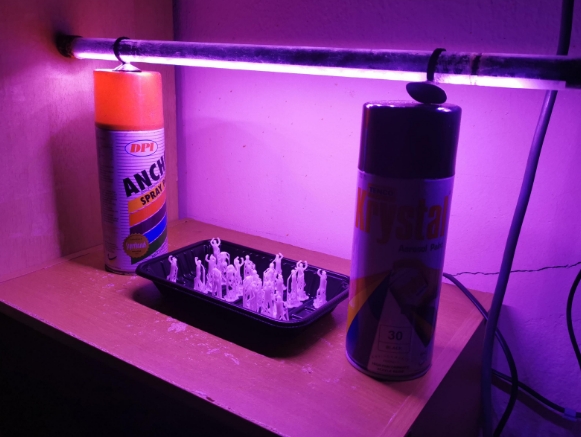
UV light, specifically UV light in the 365 nm to 405 nm wavelength range, is absorbed by the chemicals in the resin, causing them to harden. The UV light acts as a catalyst, triggering a photopolymerization process that solidifies the resin.
- 365 nm light is ideal for curing most UV resins as it activates the polymerization process more efficiently than higher wavelengths.
- 405 nm light can also work, but it may be slower or less effective for certain types of resin, especially those designed for 3D printing.
Can UV Flashlights Cure Resin?
Yes, UV flashlights can cure resin, but not all UV flashlights are suitable for this task. The effectiveness of the flashlight in curing resin depends on a few key factors:
- Wavelength: The flashlight must emit light in the correct UV spectrum, ideally 365 nm for optimal curing.
- Power Output: The intensity or power output of the UV flashlight is crucial. A low-power flashlight will not provide enough light to cure resin effectively. Typically, a UV flashlight with a 3W to 5W output is recommended for resin curing.
- Curing Time: Flashlights tend to cure resin more slowly compared to UV lamps designed for the purpose. Resin pieces exposed to UV flashlights may need to be exposed for a longer period.
Key Considerations When Choosing a UV Flashlight for Resin Curing
To choose the right UV flashlight for curing resin, consider the following factors:
| Factor | Why It Matters | What to Look For |
|---|---|---|
| Wavelength | Affects the efficiency of the curing process. | Look for flashlights that emit 365 nm UV light. |
| Power Output | Determines how quickly and effectively the flashlight can cure the resin. | Opt for flashlights with 3W to 5W power output. |
| Curing Area Size | The size of the resin piece being cured affects the amount of light needed. | A larger curing area requires a more powerful flashlight or a flashlight with adjustable focus. |
| Battery Life/Rechargeability | Long curing sessions require sufficient battery life. | Choose a flashlight with rechargeable batteries for long sessions or AA batteries for portability. |
| Build Quality | Durability is important if you’re using the flashlight frequently. | Ensure the flashlight is made of sturdy materials and is water-resistant for ease of use. |
| Beam Focus | Focused light allows for targeted curing of specific areas. | Look for flashlights with adjustable focus to tailor the beam for different resin pieces. |
Steps to Cure Resin with a UV Flashlight
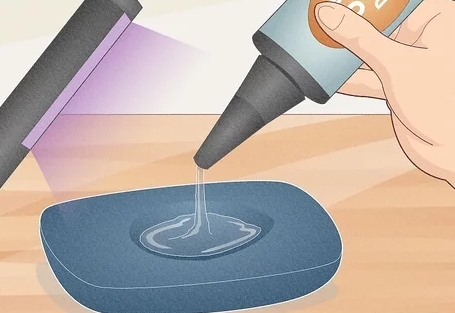
Here’s a step-by-step guide to curing resin with a UV flashlight:
- Prepare the Resin: After applying the resin to your project, ensure it’s evenly spread and in the desired shape.
- Choose the Right UV Flashlight: Make sure your UV flashlight has the proper wavelength (365 nm) and power output (3W to 5W).
- Position the Flashlight: Hold the UV flashlight about 2-6 inches above the resin. Ensure the beam is focused directly on the resin’s surface for even curing.
- Cure the Resin: Shine the flashlight on the resin. Depending on the resin’s thickness and the flashlight’s power, the curing process can take anywhere from 1 to 5 minutes for smaller objects, and longer for larger pieces.
- Check the Cured Resin: After the curing time has passed, check the resin to ensure it’s fully solidified. If necessary, cure it for additional time in small increments.
Best UV Flashlights for Resin Curing
Here’s a comparison of UV flashlights that are great for curing resin, along with a recommendation for the Tank007 K9A5 UV Flashlight.
| Model | Wavelength | Power Output | Battery Type | Curing Time | Key Features |
|---|---|---|---|---|---|
| Tank007 K9A5 UV Flashlight | 365 nm | 3W | Rechargeable USB | 3-5 minutes (small objects) | High intensity, portable, adjustable beam, compact design. |
| Streamlight 51018 UV | 365 nm | 5W | AA Batteries | 5-10 minutes (larger objects) | Water-resistant, durable, professional-grade light output. |
| Nitecore EA41 UV | 365 nm | 5W | Rechargeable Li-ion | 4-6 minutes (depending on size) | Adjustable zoom, long battery life, rugged build. |
| Fenix UV-5 | 365 nm | 2W | Rechargeable Li-ion | 5-7 minutes (depending on size) | Compact, lightweight, energy-efficient. |
How Long Does It Take to Cure Resin with a UV Flashlight?
The time it takes to cure resin with a UV flashlight can vary based on the flashlight’s power output, the thickness of the resin, and the size of the resin piece. Typically:
- Thin layers of resin: 1-3 minutes of exposure.
- Thicker layers or larger objects: 5-10 minutes of exposure.
For large 3D printed objects, you may need to move the flashlight around the surface to ensure even curing, as UV flashlights have a smaller curing area compared to UV curing lamps.
Conclusion
Yes, UV flashlights can cure resin, but it’s essential to select the right flashlight for the job. Look for one with the correct 365 nm wavelength and a 3W to 5W power output to ensure effective and efficient curing. While a UV flashlight can cure resin, it may take a bit longer compared to dedicated UV lamps, and some resins may require more powerful light sources to cure properly.
If you’re just getting started with resin curing, the Tank007 K9A5 UV Flashlight is an excellent choice for both beginners and professionals, providing high performance, durability, and a 365 nm wavelength ideal for resin curing.
The post Can UV Flashlights Cure Resin? A Complete Guide appeared first on Tank007.
]]>The post Top UV Lights for Resin Curing in 2025: A Complete Guide appeared first on Tank007.
]]>Why Choose UV Lights for Resin Curing?
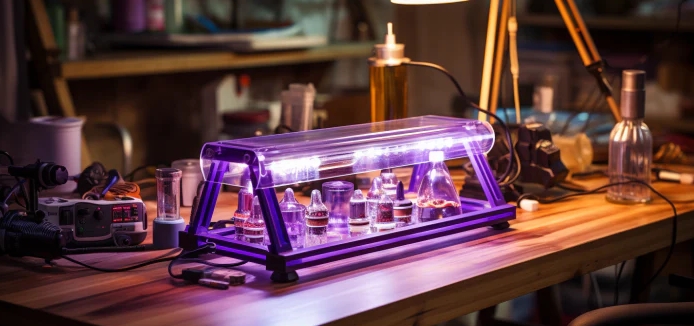
UV lights offer a fast and effective way to cure UV resin, hardening it into a durable, glossy finish. Traditional curing methods, such as air-drying or using heat, can be time-consuming and less reliable. UV lights, on the other hand, provide a consistent and rapid curing process that allows resin artists to create intricate designs with precision.
Key benefits of using UV lights for resin curing include:
- Speed: UV curing is much faster compared to traditional methods, with most resins curing within minutes.
- Precision: UV lights offer controlled exposure to UV rays, ensuring that the resin cures evenly without bubbles or imperfections.
- Durability: UV-cured resin has a strong and glossy finish that is resistant to scratches and fading.
What to Look for in a UV Light for Resin Curing?
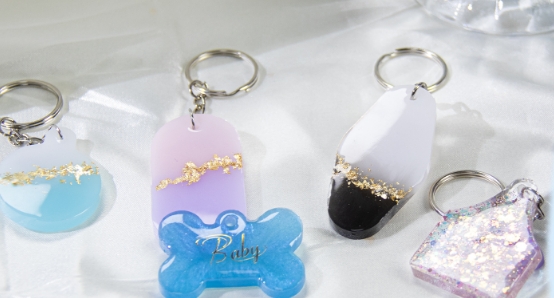
When choosing a UV light for resin curing, there are several factors to consider:
- Wavelength: The wavelength of the UV light determines how effectively it will cure the resin. Resin curing typically requires UV-A light (365 nm or 395 nm).
- Power Output: The power output, measured in watts, affects the intensity and curing speed. Higher wattage generally means faster curing times.
- Design and Size: UV lights come in various designs, from handheld flashlights to larger curing lamps. Choose one based on your workspace and the size of your resin projects.
- Portability: For artists who work on the go, compact and rechargeable models are ideal.
- Durability: A good UV light should be durable enough to withstand frequent use, especially for resin crafters who may use the light for long hours.
Top UV Lights for Resin Curing in 2025
Below are some of the best UV lights for resin curing, with a special recommendation for the AA02 UV Light from Tank007, which offers excellent features at a competitive price.
1. Tank007 AA02 UV Light (365 nm, 3W)
Product Link: Tank007 AA02 UV Light
Features:
- Wavelength: 365 nm (ideal for resin curing)
- Power Output: 3W
- Design: Compact and portable, can be used as a handheld flashlight
- Battery: Rechargeable lithium battery
- Build Quality: Durable aluminum body, impact-resistant
Pros:
- Small and portable, perfect for on-the-go artists
- High intensity UV light for fast and even curing
- Rechargeable, reducing the need for disposable batteries
- Affordable price point
Cons:
- Limited to small projects due to its size
- Requires close proximity to the resin for optimal curing
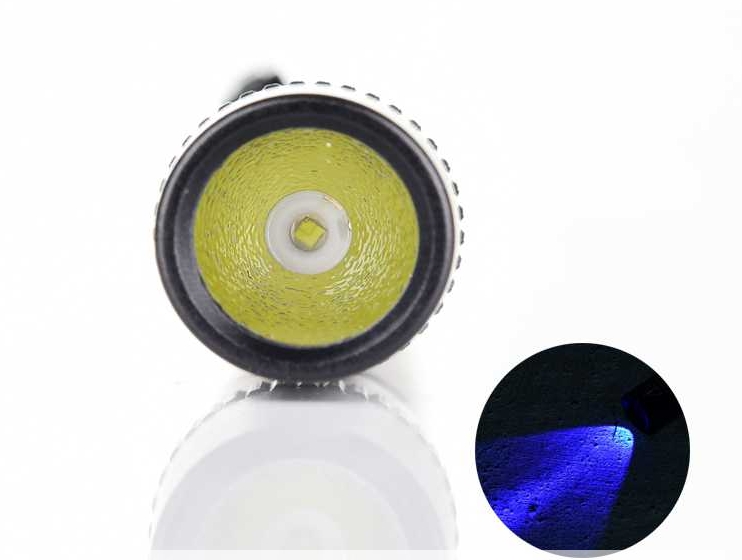
Why It’s Recommended:
The Tank007 AA02 UV Light is perfect for smaller resin crafting projects due to its portable size and strong UV output. It offers the convenience of rechargeable batteries, making it an eco-friendly choice. With a wavelength of 365 nm, it provides effective curing for most UV resins.
2. ArtResin UV Curing Lamp
Features:
- Wavelength: 395 nm (effective for a wide range of resins)
- Power Output: 36W
- Design: Large lamp with a broad curing surface
- Battery: Plug-in electric, no need for batteries
Pros:
- Large curing surface allows for curing multiple pieces at once
- Reliable and durable for heavy use
- Faster curing time due to high power output
Cons:
- Bulky and not portable
- Higher price point
Why It’s Recommended:
Ideal for serious resin artists with large projects, the ArtResin UV Curing Lamp offers a high-power output and expansive curing area. It’s a great choice for professionals who require consistent and fast curing.
3. UV LED Curing Lamp by Anycubic
Features:
- Wavelength: 405 nm (suitable for UV resins and 3D printing)
- Power Output: 48W
- Design: Compact with adjustable settings
- Battery: Plug-in electric
Pros:
- Multiple adjustable modes for different curing times
- Compatible with most UV resins
- Compact and easy to store
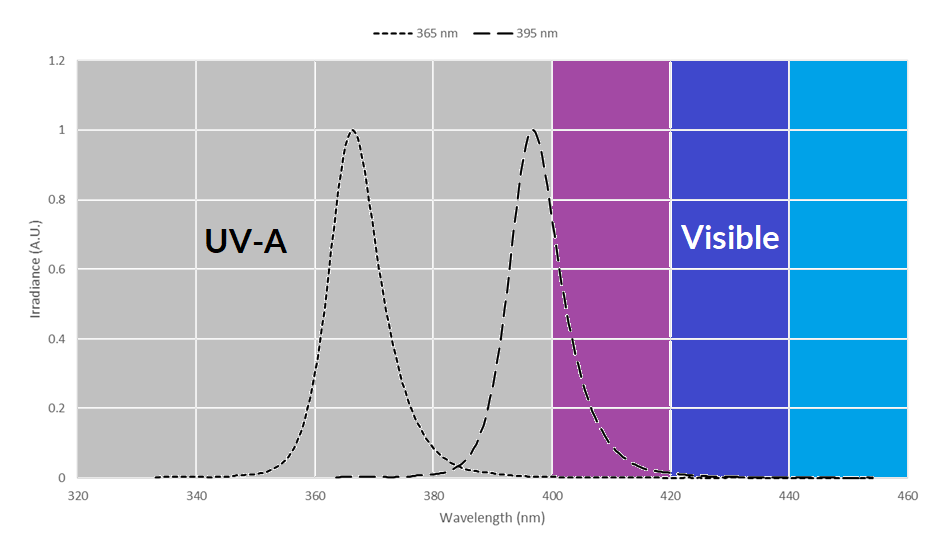
Cons:
- 405 nm wavelength may not be as effective as 365 nm for resin curing
- Requires proximity to the surface for best results
Why It’s Recommended:
This lamp is perfect for 3D printing resin curing and smaller DIY projects. Its adjustable settings make it versatile for various curing needs.
Comparison Table
| Feature | Tank007 AA02 UV Light | ArtResin UV Curing Lamp | Anycubic UV LED Curing Lamp |
|---|---|---|---|
| Wavelength | 365 nm | 395 nm | 405 nm |
| Power Output | 3W | 36W | 48W |
| Design | Handheld, compact | Large, stationary | Compact, adjustable settings |
| Battery | Rechargeable lithium | Plug-in electric | Plug-in electric |
| Portability | High | Low | Medium |
| Curing Surface Area | Small | Large | Medium |
| Ideal for | Small projects | Large projects | 3D printing and small projects |
| Price Range | Budget-friendly | High-end | Mid-range |
Final Thoughts
When choosing a UV light for resin curing, it’s essential to match the tool to your project size and your budget. The Tank007 AA02 UV Light is a fantastic choice for hobbyists and smaller-scale resin projects due to its portability, high output, and affordability. For those working on larger pieces or requiring faster curing, the ArtResin UV Curing Lamp offers more power and a larger curing surface. Ultimately, your choice depends on your needs, workspace, and whether portability or power is more important.
Whichever UV light you choose, ensure that it matches the resin you’re using and the scale of your crafting projects. Happy crafting and curing!
The post Top UV Lights for Resin Curing in 2025: A Complete Guide appeared first on Tank007.
]]>The post Step-by-Step Guide to Using UV Flashlight for Resin Curing appeared first on Tank007.
]]>Introduction to UV Resin Curing
UV resin curing involves using ultraviolet light to initiate a photochemical reaction that hardens liquid resin into a solid form. This process is commonly used in crafting, jewelry making, coatings, adhesives, and electronics. Compared to traditional curing methods, UV curing offers faster results, greater control, and fewer environmental impacts.
Step-by-Step Guide to Curing Resin with a UV Flashlight
Step 1: Choose the Right UV Resin
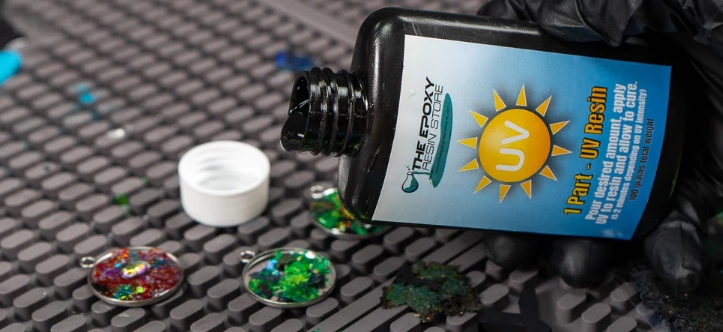
Select a UV-curable resin compatible with your project. Make sure to choose high-quality resin that matches the desired hardness, clarity, and curing time for your application.
Key Considerations:
- Low-viscosity resins are suitable for intricate molds or small details.
- High-viscosity resins work well for thick layers or larger pieces.
- Ensure the resin specifies UV curing compatibility.
Step 2: Prepare Your Workspace
Set up a clean, dust-free, and well-ventilated workspace. Ensure all tools and materials are within reach. Use safety gear, such as gloves and safety goggles, to protect your skin and eyes from resin and UV light.
Step 3: Select the Right UV Flashlight
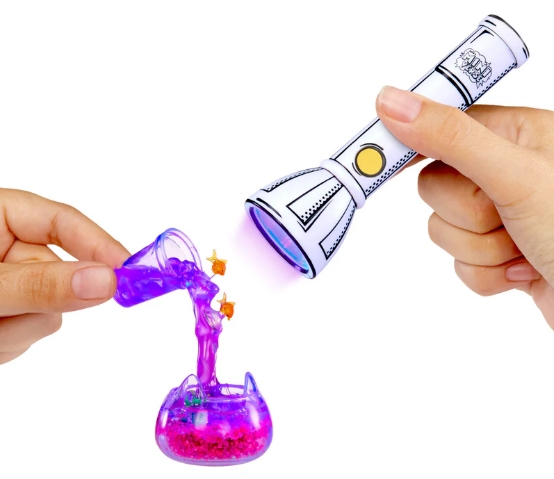
Choosing the correct UV flashlight is critical for effective curing. The key specifications include:
| Feature | Why It Matters | Recommended Range |
|---|---|---|
| Wavelength | Determines compatibility with the resin. | 365nm–405nm UV light |
| Light Intensity | Affects curing speed and efficiency. | 5W–12W for most resin applications |
| Beam Area | Helps target small or large curing areas. | Adjustable beam size preferred |
| Durability | Ensures long-term use without overheating. | Aluminum body, heat dissipation |
Step 4: Apply the Resin
Pour the resin into the desired mold or apply it directly onto the surface. Use a leveling tool or scraper to ensure even application. For multi-layered projects, apply thin layers of resin to ensure uniform curing.
Step 5: Start UV Curing
Hold the UV flashlight 1–2 inches away from the resin. Slowly move the flashlight across the surface to ensure even exposure to the UV light.
Tips for Curing:
- Thin Layers: Curing thin layers (1–2mm) provides the best results.
- Time: Curing times vary depending on the resin and flashlight intensity (typically 2–5 minutes per layer).
- Avoid Overheating: Take breaks if the flashlight or resin gets too hot.
Step 6: Check for Complete Curing
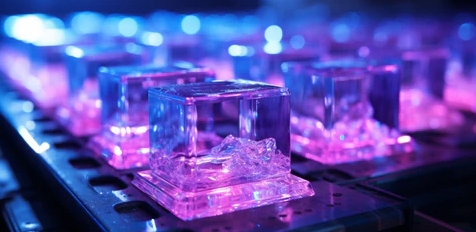
Inspect the resin for hardness and clarity after curing. If the resin feels tacky or soft, reapply the UV flashlight for another 1–2 minutes. For multi-layered projects, ensure each layer is fully cured before applying the next.
Step 7: Finishing Touches
After the resin has completely cured, remove it from the mold or clean the surface. Sand or polish the edges for a smooth finish, if necessary. Use a clear coat or additional UV resin for added shine or protection.
Common Problems and Troubleshooting
| Problem | Cause | Solution |
|---|---|---|
| Resin remains tacky | Insufficient UV exposure | Increase curing time or use a stronger UV flashlight. |
| Uneven curing | Uneven resin application or exposure | Apply thinner layers and move the UV flashlight evenly. |
| Overheating of resin | Excessive UV exposure | Cure in shorter intervals and allow cooling time. |
Benefits of Using a UV Flashlight for Resin Curing
| Traditional Curing Methods | UV Flashlight Curing |
|---|---|
| Long curing times (hours to days) | Fast curing (minutes) |
| Requires heat or external equipment | Compact and portable flashlight |
| Limited precision | Greater control and targeting |
| High energy consumption | Energy-efficient and eco-friendly |
Conclusion
UV flashlights are essential tools for resin curing, enabling fast and efficient results for a wide range of applications. By following this step-by-step guide and using the right tools, you can achieve professional-quality results while minimizing common issues. With the right UV flashlight and techniques, resin curing becomes a seamless and enjoyable process.
The post Step-by-Step Guide to Using UV Flashlight for Resin Curing appeared first on Tank007.
]]>